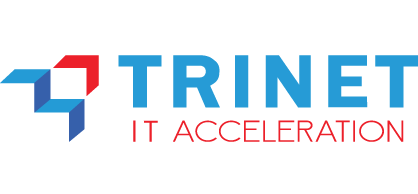Tech Innovation > Digital & IoT > Gigabit Passive Optical Network (GPON)
Gigabit Passive Optical Network (GPON)
Without this solution, organizations face the following challenges:
Network Speed Limitations
Without GPON, organizations face slower internet speeds and limited bandwidth, which impacts productivity and the ability to handle high data traffic.
Higher Operational Costs
Without GPON, businesses incur higher operational costs due to the need for multiple and complex network connections, as well as increased power consumption.
Limited Coverage and Scalability
Without GPON, network coverage is limited, especially in rural or remote areas, and scalability becomes difficult, hindering future growth.

Key Features & Capabilities
Gigabit Passive Optical Network (GPON) ensures fast, reliable connections and scalable network infrastructure.
Show Details
a. High Bandwidth & Speed
- Supports Gigabit Speeds: GPON provides up to 2.5 Gbps downstream and 1.25 Gbps upstream per optical line terminal (OLT).
- Scalable for Future Needs: Handles growing demand for 4K/8K streaming, cloud computing, and IoT applications.
b. Passive Optical Network (PON) Architecture
- No Active Components: Uses passive splitters, reducing power consumption and maintenance costs.
- Longer Lifespan: Passive components last longer compared to active electronic switches.
c. Long Transmission Distance
- Covers up to 20 km: Extends connectivity without signal degradation, making it ideal for cities and rural areas.
- Less Signal Loss: Optical fiber transmission is less susceptible to interference than copper cables.
d. Point-to-Multipoint (P2MP) Efficiency
- One Fiber for Multiple Users: A single fiber from the Optical Line Terminal (OLT) serves up to 128 end-users via splitters.
- Cost-Effective Deployment: Reduces fiber infrastructure requirements compared to point-to-point networks.
e. Triple Play Services (Voice, Video, Data)
- High-Speed Internet: Delivers ultra-fast internet for home and business users.
- IPTV & Video Streaming: Supports smooth HD and 4K streaming without buffering.
- VoIP (Voice over IP): Enables high-quality phone and conferencing services.
f. Advanced Security Features
- Encryption Support (AES-128): Ensures data privacy and secure communication.
- Traffic Isolation: Separates different user data streams, preventing unauthorized access.
g. Quality of Service (QoS) & Traffic Management
- Supports TDM & TDMA: Ensures fair bandwidth allocation for all users.
- Efficient Bandwidth Management: Prioritizes critical applications like VoIP and video conferencing.
h. Energy Efficient & Eco-Friendly
- Consumes Less Power: No powered devices in the distribution network.
- Reduces Carbon Footprint: Lower energy consumption compared to copper-based networks.
i. Easy Integration with Existing Networks
- Supports FTTH, FTTB, FTTD: Compatible with Fiber-to-the-Home (FTTH), Fiber-to-the-Building (FTTB), and Fiber-to-the-Desk (FTTD).
- Compatible with Legacy Networks: Works alongside Ethernet, Wi-Fi, and other broadband technologies.

Business Benefits
Gigabit Passive Optical Network (GPON) provides high-speed, reliable connections for seamless data transfer.
Show Details
Benefits of Using Fiber Optic Networks
Fiber optic networks offer numerous advantages in terms of cost savings, speed, security, and future-proof capabilities, making them an ideal choice for modern business and infrastructure needs. Below are the key benefits of using fiber optic technology:
a. Cost Savings & Operational Efficiency
- Lower Infrastructure Costs: A single optical fiber serves multiple users, reducing cabling and networking costs.
- Minimal Maintenance: Uses passive components (splitters) that require less maintenance compared to active network equipment.
- Reduces Power Consumption: Passive Optical Networks (PONs) consume less energy than traditional Ethernet networks, lowering electricity costs.
- Fewer Equipment Requirements: Eliminates the need for multiple switches and repeaters, reducing hardware expenses.
b. High-Speed & Reliable Connectivity
- Gigabit Speeds: Provides up to 2.5 Gbps download and 1.25 Gbps upload. Now, XGPON/XGSPON technology offers up to 10 Gbps download and 10 Gbps upload, ensuring smooth business operations.
- Stable & Low-Latency Performance: Ensures uninterrupted VoIP calls, video conferencing, cloud applications, and online transactions.
- Supports Multiple Users & Devices: Ideal for offices, campuses, and industrial sites with high network traffic.
3. Scalable & Future-Proof Network
- Easily Expandable: Supports Fiber-to-the-Home (FTTH), Fiber-to-the-Building (FTTB), and Fiber-to-the-Desk (FTTD) solutions.
- Accommodates Future Growth: Handles increasing bandwidth demands from IoT, AI, cloud computing, and 4K/8K streaming.
- Supports Smart Buildings & Cities: Seamlessly integrates with smart security systems, automation, and IoT devices.
4. Enhanced Security & Data Protection
- AES-128 Encryption: Ensures secure data transmission across the network.
- Traffic Isolation: Prevents unauthorized access by separating business-critical data from guest or employee networks.
- Less Vulnerable to Cyber Threats: Fiber-optic networks are more secure than traditional copper-based systems.
5. Superior Quality of Service (QoS) & Performance Optimization
- Optimized Bandwidth Allocation: Uses TDM & TDMA to efficiently distribute network resources.
- Prioritization of Critical Applications: Guarantees smooth performance for VoIP, cloud applications, and video conferencing.
- Minimal Network Downtime: Ensures consistent connectivity for business operations.
6. Versatile & Multi-Service Capabilities
- Supports Triple Play Services: Delivers high-speed internet, voice (VoIP), and HD/4K video on a single fiber network.
- Simplifies Network Management: Reduces complexity with unified network infrastructure for multiple services.
- Ideal for Different Business Sectors: Suitable for corporate offices, hospitals, hotels, educational institutions, and industrial facilities.

Use Cases
Gigabit Passive Optical Network (GPON) provides high-speed, reliable connectivity across various industries.
Show Details
a. Corporate Offices and Enterprise Networks
- Use Case: Scalable & High-Speed Network for Offices
- High-Speed Internet & Voice: GPON provides seamless internet connectivity and VoIP services for large corporate offices and enterprise campuses.
- Converged Network: One GPON infrastructure supports data, voice, and video services for employees, reducing the need for multiple systems and simplifying network management.
- Improved Collaboration: With high bandwidth, employees can engage in video conferencing and real-time collaboration without interruptions, improving productivity.
- Scalability: The system can easily grow with the business, adding more employees or branches without major infrastructure changes.
- Example: A multinational corporation uses GPON to connect multiple office buildings and support business-critical applications like cloud services, CRM systems, and internal communication platforms.
b. Hotels and Hospitality Industry
- Use Case: Seamless Guest Experience & Smart Building Integration
- High-Speed Internet for Guests: Hotels can provide fast, reliable internet to guests via GPON, supporting everything from browsing to streaming services.
- VoIP Services for Communication: Hotels can deploy GPON to provide VoIP phone services throughout the premises, enhancing communication between staff and guests.
- Smart Building Connectivity: GPON supports smart building technologies such as automated lighting, HVAC systems, and security cameras, all connected via a single fiber optic network.
- Cost Efficiency: By using a single network for internet, voice, and building management services, hotels reduce operational complexity and costs.
- Example: A luxury hotel installs GPON to offer high-speed Wi-Fi throughout the property, integrated with smart room controls and 24/7 customer service through VoIP systems.
c. Educational Institutions (Schools, Universities)
- Use Case: Campus-Wide High-Speed Connectivity
- Reliable Internet for Students and Faculty: GPON ensures that both students and faculty have reliable access to high-speed internet for research, online learning, and communication.
- Support for E-learning Platforms: Supports high-definition video streaming for virtual classrooms and online exams with minimal lag.
- Unified Network Infrastructure: GPON can handle internet, VoIP, and video surveillance on a single, converged network, simplifying management.
- Scalable Network for Growing Campuses: As student populations grow, GPON networks can be expanded without significant additional investment.
- Example: A large university uses GPON to connect its library, dormitories, classrooms, and administration buildings, providing seamless access to educational resources, video lectures, and VoIP phone services.
d. Healthcare Sector (Hospitals and Clinics)
- Use Case: Secure & High-Performance Healthcare Network
- Fast, Reliable Connectivity for Medical Equipment: GPON ensures high-speed connectivity for medical devices and patient management systems without delays or interruptions.
- Support for Telemedicine and Video Consultations: High bandwidth is crucial for telemedicine applications, allowing high-definition video consultations between doctors and patients.
- Secure Data Transmission: With built-in encryption, GPON ensures that sensitive medical data is transmitted securely, maintaining HIPAA compliance.
- Smart Hospital Infrastructure: GPON connects smart sensors, IoT devices, and video surveillance systems, improving hospital efficiency and security.
- Example: A hospital uses GPON to connect critical healthcare systems, support real-time patient monitoring, and enable telehealth services for remote consultations.
e. Retail and Shopping Malls
- Use Case: Streamlined Operations and Enhanced Customer Experience
- Fast Internet for POS Systems: Retailers use GPON to provide reliable high-speed internet for Point of Sale (POS) systems, ensuring smooth transactions.
- Video Surveillance & Security: GPON supports high-definition video surveillance systems that help monitor store entrances, parking areas, and high-traffic zones, enhancing security.
- In-Store Customer Engagement: Retailers can leverage GPON’s bandwidth for digital signage, interactive kiosks, and Wi-Fi for customers.
- Inventory Management: GPON ensures that inventory management systems can be accessed in real-time, improving stock control and replenishment.
- Example: A shopping mall uses GPON to connect its security cameras, Wi-Fi access points, and interactive digital displays, creating an enhanced customer experience and streamlined operations.
f. Industrial & Manufacturing Sites
- Use Case: Reliable Connectivity for Automation and Monitoring
- Support for IoT and Smart Manufacturing: GPON can handle the data transmission for IoT devices, sensors, and machines, supporting the automation of manufacturing processes.
- Real-Time Monitoring: Supports real-time monitoring of equipment performance, temperature control, and warehouse management systems.
- Efficient Data Handling: With GPON’s high-speed bandwidth, large amounts of production and sensor data can be transmitted to central servers for analysis without delay.
- Remote Access & Control: GPON enables remote access to critical systems, allowing operators to control and monitor processes from anywhere.
- Example: A manufacturing plant implements GPON to connect machines, sensors, and remote monitoring systems, ensuring efficient production and high uptime.

How It Works
Gigabit Passive Optical Network (GPON) delivers high-speed, reliable internet using fiber-optic technology.
Show Details
a. Network Deployment
-
GPON infrastructure is deployed across various industries to provide high-speed, reliable internet and communication services. The network consists of fiber optic cables that distribute data from a central office to multiple end-users, including homes, businesses, and industrial sites.
b. Network Configuration
-
The GPON system is configured to ensure efficient data flow across the network. This includes the setup of Optical Line Terminals (OLTs) at the central office, Optical Network Units (ONUs) at the user premises, and the proper distribution of bandwidth to meet specific needs.
c. Network Management
-
GPON networks are monitored and managed remotely using Network Management Systems (NMS). These systems allow administrators to track performance, monitor traffic, and manage network resources to ensure optimal operation and minimize downtime.
d. Security & Encryption
-
GPON employs strong encryption protocols to ensure secure data transmission across the network. This encryption protects sensitive information from unauthorized access, ensuring that all data flowing through the fiber optic network is secure.
e. Real-Time Monitoring
-
Administrators can monitor the real-time status of the GPON network, including traffic loads, link status, and overall performance. Alerts are triggered for any issues, enabling proactive responses to ensure uninterrupted service.
f. Remote Support & Troubleshooting
-
Remote diagnostic tools are available to troubleshoot and resolve network issues without the need for physical intervention. This minimizes downtime and ensures that service disruptions are quickly addressed, improving overall network reliability.
g. Network Maintenance & Updates
-
Regular software updates and firmware patches are deployed remotely to ensure the GPON network remains secure and up-to-date. Maintenance tasks, such as bandwidth optimization and equipment checks, are carried out to maintain optimal performance.
h. Network Decommissioning & Disposal
-
When GPON equipment reaches the end of its lifecycle, secure data wiping is performed to ensure that no sensitive information is left behind. The equipment is then safely decommissioned or recycled according to industry standards.
Contact our experts for further information
CONTACT US












